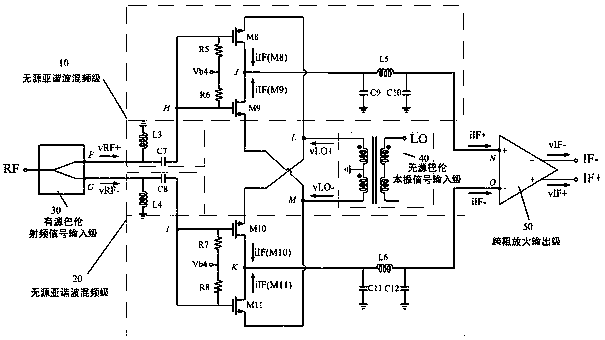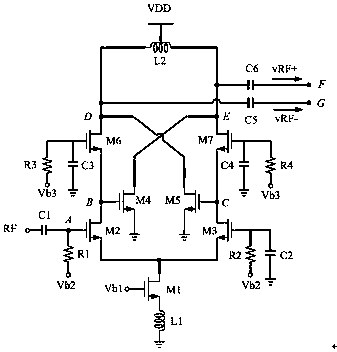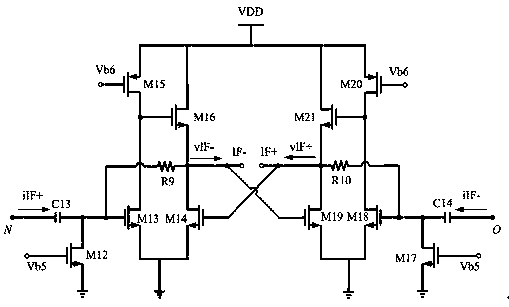High-gain and high-isolation millimeter wave double-balance passive subharmonic mixer
A passive sub-harmonic, high isolation technology, applied in the direction of modulation and conversion of balance devices, electrical components, modulation transfer, etc., can solve the problems of 3dB loss, amplitude and phase imbalance, limit operating frequency, etc., and achieve low conversion loss. , good amplitude and phase consistency, the effect of improving the conversion gain
- Summary
- Abstract
- Description
- Claims
- Application Information
AI Technical Summary
Problems solved by technology
Method used
Image
Examples
Embodiment Construction
[0016] In order to make the objects and advantages of the present invention clearer, the present invention will be further described below in conjunction with the accompanying drawings and specific embodiments.
[0017] Such as figure 1 As shown, the millimeter-wave double-balanced passive subharmonic mixer includes: passive subharmonic mixing stages 10 and 20, an active balun RF signal input stage 30, a passive balun local oscillator signal input stage 40 and Transimpedance amplifying output stage 50 . The radio frequency input signal RF passes through the active balun input stage 30 to generate the in-phase radio frequency signal vRF+ and the anti-phase radio frequency signal vRF-; the local oscillation signal LO passes through the passive balun 40 to generate the in-phase local oscillation signal vLO+ and the anti-phase local oscillation signal vLO-; vRF+ is mixed with vLO+ and vLO- respectively in passive subharmonic mixing stage 10, and vRF- is mixed with vLO+ and vLO- r...
PUM
 Login to View More
Login to View More Abstract
Description
Claims
Application Information
 Login to View More
Login to View More - R&D
- Intellectual Property
- Life Sciences
- Materials
- Tech Scout
- Unparalleled Data Quality
- Higher Quality Content
- 60% Fewer Hallucinations
Browse by: Latest US Patents, China's latest patents, Technical Efficacy Thesaurus, Application Domain, Technology Topic, Popular Technical Reports.
© 2025 PatSnap. All rights reserved.Legal|Privacy policy|Modern Slavery Act Transparency Statement|Sitemap|About US| Contact US: help@patsnap.com



